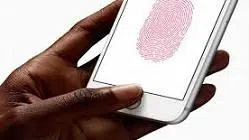 When reviewing the etymology of the term finger , we arrive at the Greek word dáktylos , which can be translated as finger . Fingerprint, therefore, is an adjective that refers to the digital (what belongs to the fingers).
When reviewing the etymology of the term finger , we arrive at the Greek word dáktylos , which can be translated as finger . Fingerprint, therefore, is an adjective that refers to the digital (what belongs to the fingers).
It should be remembered that the fingers are the articulated appendages that end the human foot and hand. Taking into account what was written above, the fingerprint is linked to these appendages.
The idea of a fingerprint or fingerprint , in this framework, refers to the impression that the fingertip leaves on a surface when it comes into contact with it. That is why the notion is also known as fingerprinting .
This fingerprint is possible due to the innate lines that all people have drawn on their fingertips. The lines are unique to each individual: no two patterns repeat themselves. This makes fingerprints used as an identification method .
Another name for the fingerprint is dermatoglyph , and it is important to clarify that not only human beings have these marks, but it is also possible to see them in chimpanzees, gorillas, koalas and squirrels, among other species .
There are sensors that allow a subject's fingerprint to be recognized thanks to the device's ability to read and store fingerprints. This makes it possible to allow or deny access to a site or service, for example, through a permission system linked to fingerprints.
Access to a physical space can be controlled using a fingerprint recognition sensor. In the system it is possible to register and save the fingerprints of the person with authorized access. The system is then linked to an electronic lock that opens or keeps the door closed depending on the result of the comparison of the fingerprint of the current user and the one allowed access: if someone with permission to enter places their fingerprint on the sensor, the door opens; On the other hand, if someone does it without authorization, the opening does not occur.
Typically, the finger used in person identification systems is the thumb, although the index finger is also used. The first technique dates back to the end of the 19th century, and was created by the French police officer Alphonse Bertillon ; Later, the anthropologist and also police officer of Croatian origin Juan Vucetich Kovacevich made certain improvements to it.
Let's see below a classification of fingerprints according to their characteristics and the medium in which they are found or recorded:
 * visible : these are also known as positive , and are those that the fingers leave on a surface when they are impregnated with colorants, natural or artificial, such as ink, blood or dust, among many other substances or materials that allow the generation of a mark after contact of the fingers with some object. To fall into this category, the fingerprint must be easy to see, without the need for investigative instruments;
* visible : these are also known as positive , and are those that the fingers leave on a surface when they are impregnated with colorants, natural or artificial, such as ink, blood or dust, among many other substances or materials that allow the generation of a mark after contact of the fingers with some object. To fall into this category, the fingerprint must be easy to see, without the need for investigative instruments;
* molded : these are those that are printed as a mold, in materials such as soap, grease or plasticine, among others that belong to the group of plastic materials;
* natural : fingerprints, properly speaking, those found on the hands of the aforementioned species;
* artificial : they are intentionally captured in some device that allows them to be studied.
The scientific discipline that is dedicated to the study of fingerprints is called dactyloscopy , a term that can also be written with an accent in the second I. According to experts in the field, the techniques belonging to this discipline are the most reliable for identifying people.
